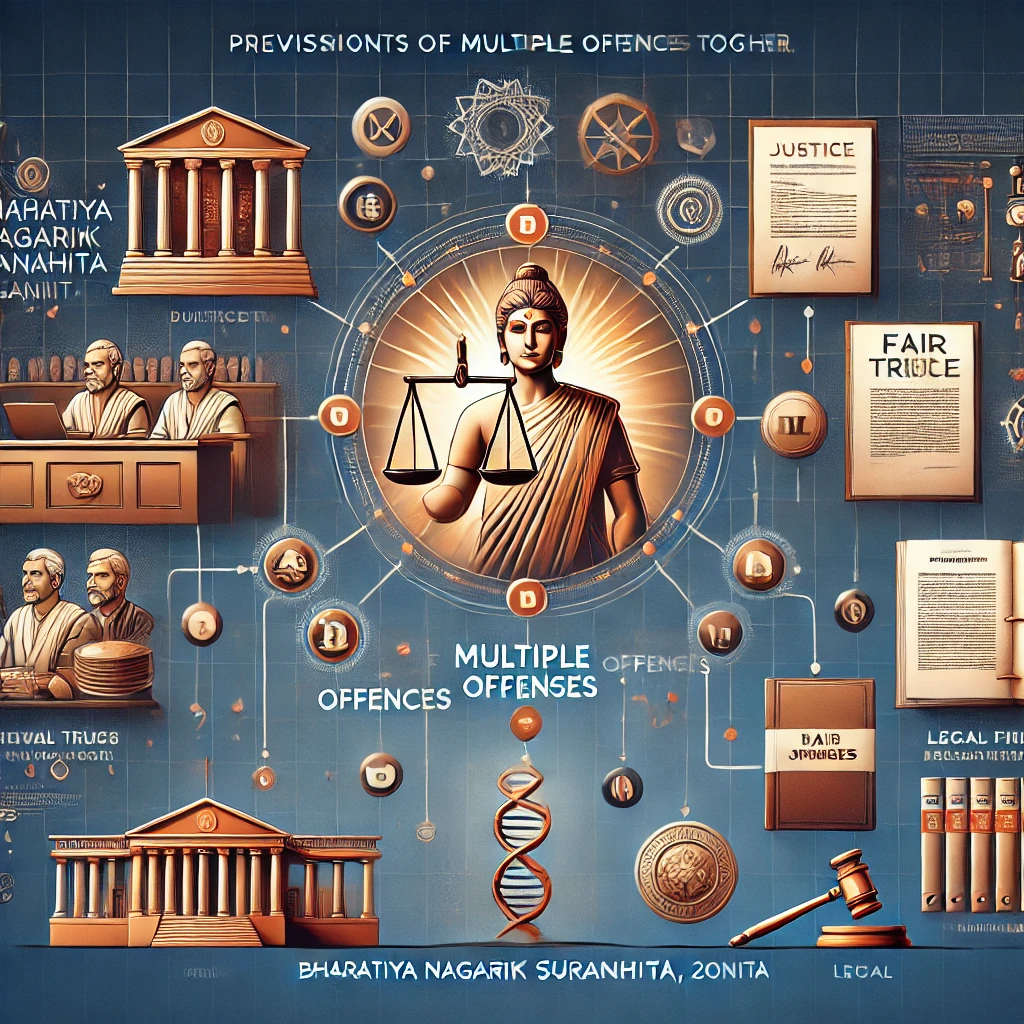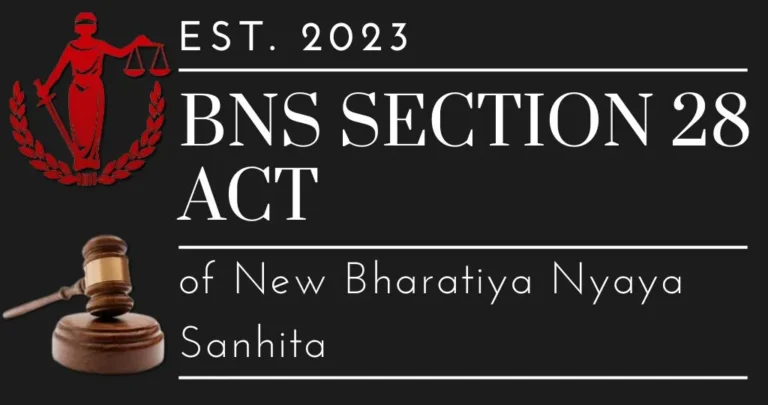
Provisions for Trial of Multiple Offences under Bharatiya Nagarik Suraksha Sanhita, 2023
Provisions for Trial of Multiple Offences under Bharatiya Nagarik Suraksha Sanhita, 2023
The Bharatiya Nagarik Suraksha Sanhita, 2023 (BNSS) has superseded the Criminal Procedure Code and was enacted on 1st July 2024. One of its significant chapters deals with the trial of multiple offences by a single person or several persons and provides the legal framework for the same. This article explains Sections 204, 242, 243, and 244 of the BNSS, which outline how courts can deal with cases involving multiple offences. The provisions address cases where one individual commits more than one offence, or where more than one person is involved in the same act or transaction, to ensure proper judicial process and clarity for trials.
Section 204: Jurisdiction of Courts for Multiple Offences
For More Updates & Regular Notes Join Our Whats App Group (https://chat.whatsapp.com/DkucckgAEJbCtXwXr2yIt0) and Telegram Group ( https://t.me/legalmaestroeducators ) contact@legalmaestros.com.
Section 204 describes jurisdiction and procedure for the trial of more than one offence by one or more persons. It applies where the provisions of sections 242, 243, or 244 (pertaining to charging and trial of more than one offence) become applicable.
Section 204(a)
Where an individual has committed more than one offense, which could be charged and tried together pursuant to Sections 242, 243, or 244, the trial may be conducted in any court capable of investigating or trying any such offense.
Section 204(b)
In the same way, where a number of people are engaged in committing offenses that can be charged and tried together, the court with jurisdiction over any of the offenses may conduct the trial.
Illustration: Where a person is charged with committing a number of thefts within a given time frame, and such offenses are liable to be tried together, any court that has jurisdiction to conduct one of the thefts can try all the connected cases together.
Section 242: Trial of More than one Similar Offence
Section 242 allows trial of more than one offence of similar nature where the offences have been committed during a period within twelve months beginning with the earliest of the offence and ending with the latest offence. The accused person may be tried and convicted of a maximum of five offences in one trial.
For More Updates & Regular Notes Join Our Whats App Group (https://chat.whatsapp.com/DkucckgAEJbCtXwXr2yIt0) and Telegram Group ( https://t.me/legalmaestroeducators )
This provision enables a more efficient trial where the accused has committed a series of similar offenses within a short span of time. It lightens the load of individual trials and allows the court to deal with a number of offenses simultaneously.
Example: If an individual is charged with committing five frauds over a period of twelve months, he can be tried for all five offences in one trial rather than individual trials for each fraud. This makes the process easier for both the court and the accused.
Section 243: Multiple Offences in a Single Transaction
Section 243 comes into play when an individual has committed more than one offence in a continuous series of related acts. In such a situation, the individual can be charged and tried for all such offences in a single trial.
This is intended to address cases where several offences are generated from a common transaction or series of acts. The focus is to consolidate allied offences and have all crimes prosecuted as part of the series.
Example: If an individual commits assault, theft, and fraud in the course of a single business transaction, all three offences can be tried simultaneously in a single proceeding. Because the offences relate to a single transaction, it would be more effective to address them in a single trial.
Section 244: Doubtful Nature of Offence
Section 244 is used when one act or a course of acts can result in several possible charges since it is uncertain which particular offence the facts will prove. In these circumstances, the accused may be charged with all the possible offences, and the court will determine from the evidence which offence was done. Or the accused may be charged with one offence alternatively to another.
This section provides for flexibility when it is not clear which of a number of offences the accused has done. It enables multiple charges to be made, so that justice is served even if the nature of the crime is ambiguous at the beginning.
Sub-section 2 of Section 244
If the accused is charged with a single offence but the facts establish that another offence (which might have been charged under Sub-section 1) was committed, they may be convicted of the offence established, even though it was not originally charged.
Illustration: If one is charged with theft, yet during the hearing, evidence presented indicates that it was a case of robbery (a graver offence), then the court is entitled to find the accused guilty of robbery since both crimes follow from the same act.
Outline of Main Provisions
Section 204 deals with the jurisdiction to try multiple offences, regardless of whether these were committed by a single offender or several individuals.
Section 242 enables the trial of numerous offences of the same type committed within a period of twelve months, but up to five offences can be tried together.
Section 243 enables the trial of all offences that were committed in one series of related acts in one trial.
Section 244 gives room for discretion when it is uncertain which offence has been committed, enabling several charges and the ability to convict for an offence that was not initially charged.
Conclusion
The Bharatiya Nagarik Suraksha Sanhita, 2023 introduces provisions that simplify and streamline the trial process for cases involving multiple offences, whether committed by a single person or multiple individuals. These sections ensure that courts can address such cases efficiently, avoiding multiple trials and ensuring justice is served comprehensively. By allowing related offences to be tried together, these provisions reduce delays and provide clarity for both the courts and the accused.
These regulations capture the contemporary legal framework’s requirement of flexibility, especially in com






